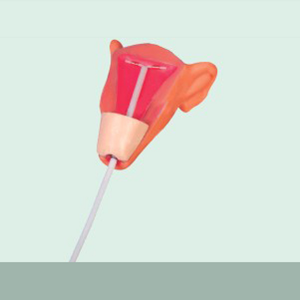ADA MED SUPPLY LIMITED
Phone:+86 19937901373
Tel:+86-0379-65160607
Email:adaanatomy@adaanatomy.com

Article tag: An intrauterine device,Medical model

An intrauterine device, also known as an IUD or IUD, is a contraceptive device that is placed inside the uterus. This type of contraceptive device is mainly inserted by a doctor to prevent pregnancy. IUDs can be unmedicated, which is an inert IUD, or they can be medicated or active, with progesterone or copper added to them to increase the contraceptive effect.
An intrauterine device is a contraceptive device placed inside a woman's uterus, often called a birth control ring or intrauterine device (IUD). It can prevent pregnancy through a variety of mechanisms, such as interfering with implantation of a fertilized egg and preventing sperm from combining with the egg. There are many types of IUDs, including copper IUDs and progestin-containing IUDs. The copper intrauterine device releases copper ions into the uterus, changing the environment of the endometrium, thereby preventing the fertilized egg from implanting. The intrauterine device containing progesterone slowly releases progesterone, which thins the endometrium and is not conducive to the implantation of a fertilized egg.
The intrauterine device is a long-lasting, simple, and safe method of contraception that is suitable for most women. However, it also has certain side effects and risks, such as irregular menstruation, uterine infection, IUD detachment or displacement, etc. Therefore, when choosing an intrauterine device as a contraceptive method, you should make a decision based on your personal circumstances and your doctor's advice after fully understanding its possible side effects and risks. At the same time, regular gynecological examinations are required to ensure that the position and status of the intrauterine device are normal, and possible problems can be discovered and dealt with in a timely manner.
Among them, the copper-containing IUD produces a sterile inflammatory reaction on the endometrium through copper ions, interfering with the activity of the enzyme system necessary for implantation, and is not conducive to the implantation and development of the fertilized egg. At the same time, copper ions will also change the biochemical properties of cervical mucus, which is not conducive to sperm activity, thereby reducing the probability of pregnancy.
There are many types of intrauterine devices, such as metal single ring, twist ring, hybrid ring, T-ring, etc. The duration of validity of these IUDs in the womb varies. Some can be left in place for 3 to 5 years, some can be left in place for 5 years, and some can even be left in place for 20 years.
However, the intrauterine device is not suitable for everyone. It also has some side effects and risks, such as possible uterine perforation, damage to other organs, heavy menstruation, irregular vaginal bleeding, lumbosacral discomfort, infection, and pregnancy with a ring, etc. question. Therefore, when choosing to use an intrauterine device, you should make a decision based on your personal circumstances and your doctor's advice after fully understanding its possible risks and side effects.